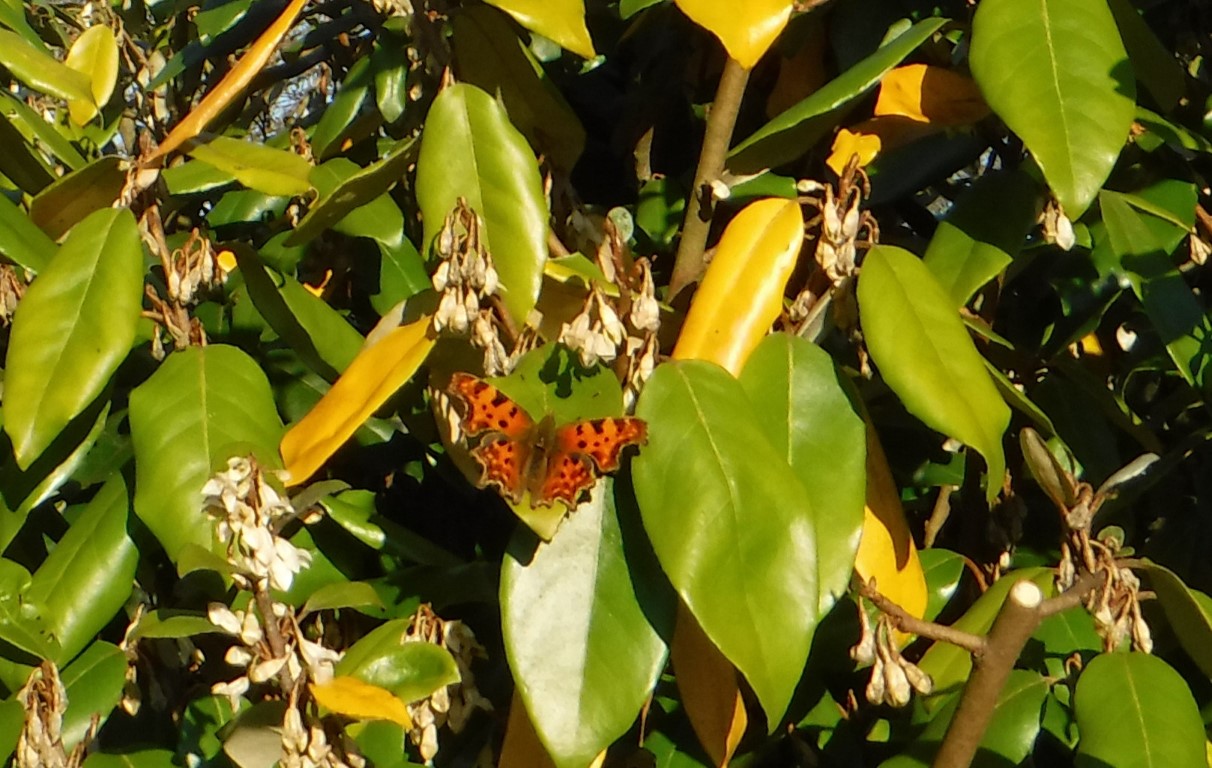
Total monthly rainfall was 154.5 mm with a maximum daily rainfall of 24 mm on November 10th . Measurable rain fell on 21 days of the month, and there were 17 days with 100% cloud-cover, almost continuously from the 19th to 29th. Maximum temperature on the warmest day was 15°C on the 6th, while maximum temperature on the coldest day was 4°C on the 20th. There were 5 days with overnight frost, and strong winds brought down many leaves and medium-sized branches on the 28th and 29th.
There were only six new first-sightings this month, including four moth species. On the 1st we found a grey moth of the Epirrita species (likely to be a November moth) in our lighted porch; the 8th produced a common plume moth on the lighted porch door, first time for our site; another Epirrita species moth posed inside our bathroom roof-light window on the 13th, this time believed to be an autumnal moth; while an umber moth (probably scarce umber) also new to our site, had to be rescued from our back woodland pond on the 23rd. The remaining first-sightings were a dead long- eared bat (confirmed by the Kent Bat group) on our grand-daughter’s unoccupied bedroom floor (November 2nd), and a live devil’s coach horse (Ocypus olens) in water beneath a water downpipe on the 18th.
-
 Canada geese
Canada geese
Canada geese
Canada geese
-
 Comma
Comma
Comma
Comma
-
 Common plume moth
Common plume moth
Common plume moth
Common plume moth
-
 Long-eared bat
Long-eared bat
Long-eared bat
Long-eared bat
https://www.kentfieldclub.org.uk/news/little-barton-farm-wildlife-notes/november-2018#sigProIdf2af1baf51
Wildflowers continued to die-back during the month. We saw our last flowering centaury on the3rd, knapweed and fleabane on the 5th, plus yarrow and rough hawkbit on the 9th. Two days later, on the 11th, we counted our last red clover – followed by the redshank on the 18th, and oxeye daisy on the 26th. This left the red and white dead-nettles and common daisy to flower into December.
We have had very little to report on wild birds during this autumn, as we seem to be “off the map” at present for migrating species which are not normally present for the rest of the year. We did have over 70 Canada geese, the most we have ever seen here, on the 10th, but they only stayed until they were photographed, whereupon they took-off en masse for other waters. Apart from that, some redwings flew over on the 26th, but did not land, so we shall have to be satisfied with our core species for a while longer.
The prolonged period of cloudy, wet, and sometimes windy weather made watching dragonflies and butterflies extremely difficult this month. The only dragonfly species to last into November was the common darter, last seen here on the 18th when four were present on the only cloudless day of the month. Two other days with plentiful but not complete sunshine produced the two butterflies seen. These were a comma on a garden garrya shrub (17th) and a peacock, fluttering behind indoor window curtains on the 30th.
Now we come to indicators of autumn into winter as depicted by the trees and shrubs. These are:
- remaining full autumn leaf colour - oak (5th), beech (6th), hazel (9th), and silver birch (10th).
- bare trees and shrubs – wild cherry (5th), ash (6th), field maple (7th), elder and hornbeam (11th), blackthorn (12th), horse chestnut (14th), oak (16th), hazel, silver birch, and beech (20th).
Two features to emerge by the end of the month were the new growth of young leaves on the woodland honeysuckle and the appearance of young catkins about 1 cm long on hazel.

